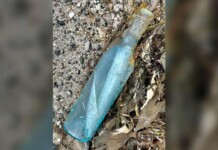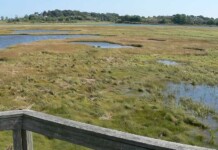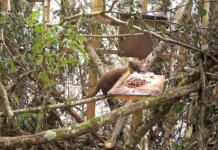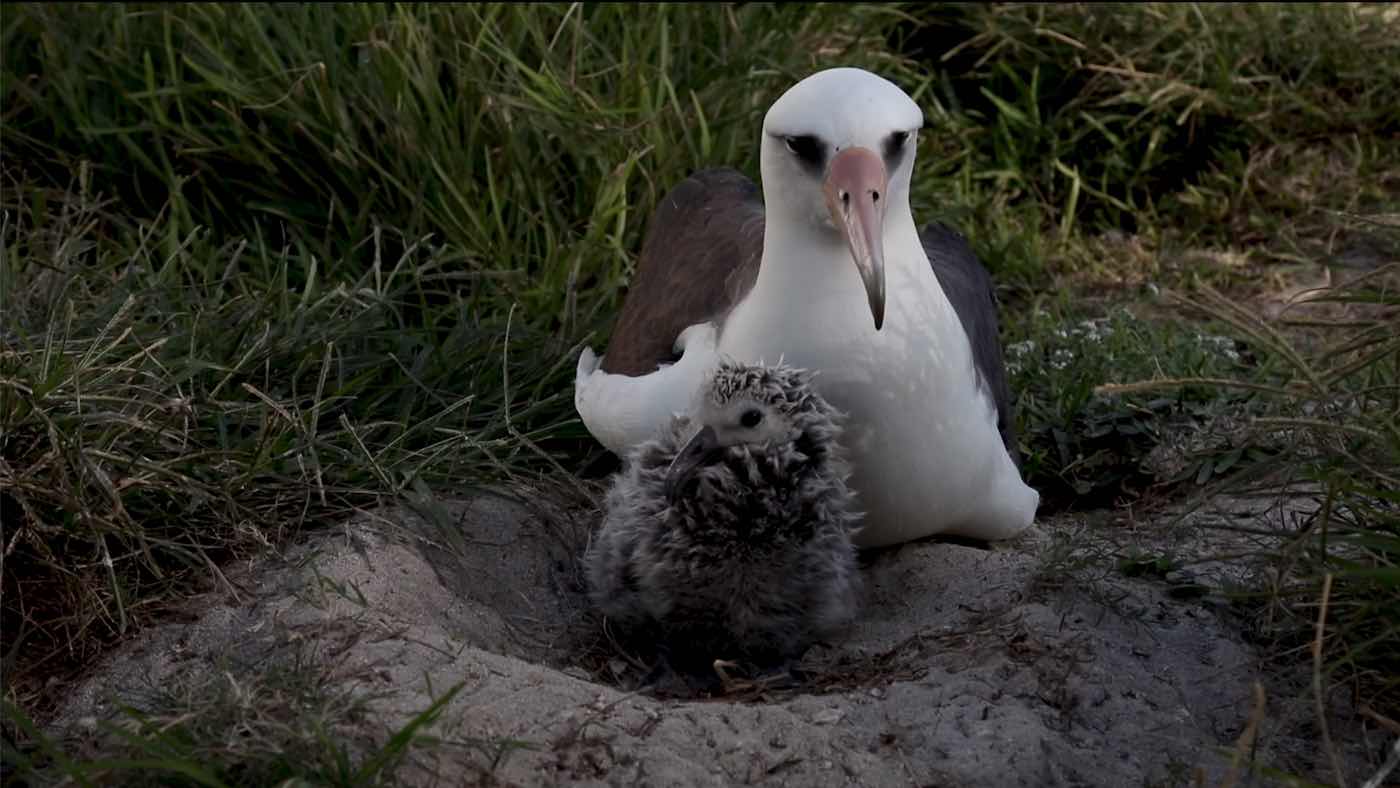The world’s oldest known wild bird, a Laysan albatross named Wisdom, hatched another chick this season at age 70.
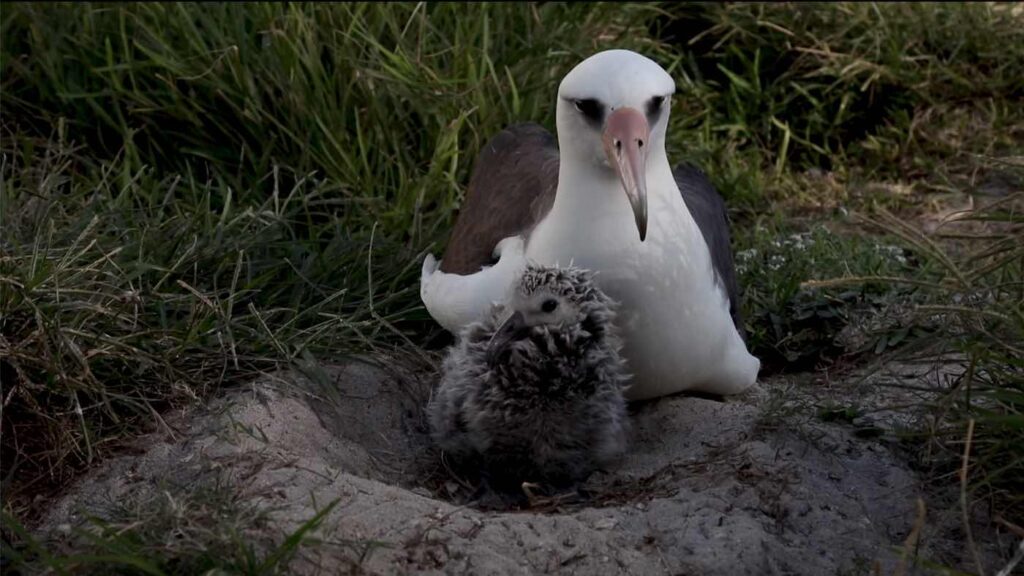
Every year, millions of albatrosses return to Midway Atoll National Wildlife Refuge to their same nesting site—and reunite with the same mate.
In the world’s largest colony of albatrosses, Wisdom and her mate, Akeakamai, have been hatching and raising chicks together since at least 2012, when biologists first banded the male.
“At least 70 years old, we believe Wisdom has had other mates,” said U.S. Fish and Wildlife Service biologist Dr. Beth Flint. “Though albatross mate for life, they may find new partners if necessary—if they outlive their first mate.”
Albatross don’t typically lay eggs every year and when they do, they lay only a single egg.
Biologists estimate that Wisdom has hatched at least 30–36 chicks in her lifetime. In fact, in 2018, biologists observed the chick that she fledged in 2011 returning to the spot just a few feet away from her current nest.
POPULAR: ‘Like a Beautifully-tuned Instrument’: 2000 Microphones Unlock the Mystery of Why Hummingbirds Hum
Almost as amazing as being a parent at 70 is the number of miles Wisdom has flown—by the time she was 60 she’d logged at least 2-3 million miles since she was first banded in 1956. That’s 4-6 trips from the Earth to the Moon and back again with plenty of miles to spare.
One reason for all these frequent-flyer miles is that every Laysan albatross spends their first 3 to 5 years fledging at sea, never touching land.
“Each year that Wisdom returns, we learn more about how long seabirds can live and raise chicks,” said Flint. “Her return not only inspires bird lovers everywhere, but helps us better understand how we can protect these graceful seabirds and the habitat they need to survive into the future.”
RELATED: One Simple Change Cut Accidental Albatross and Seabird Deaths by 98%: ‘Absolutely amazing’
Wisdom has likely flown 50,000 miles every year as an adult, and countless generations of albatrosses have a similar long-distance family reunion at Midway Atoll each year.
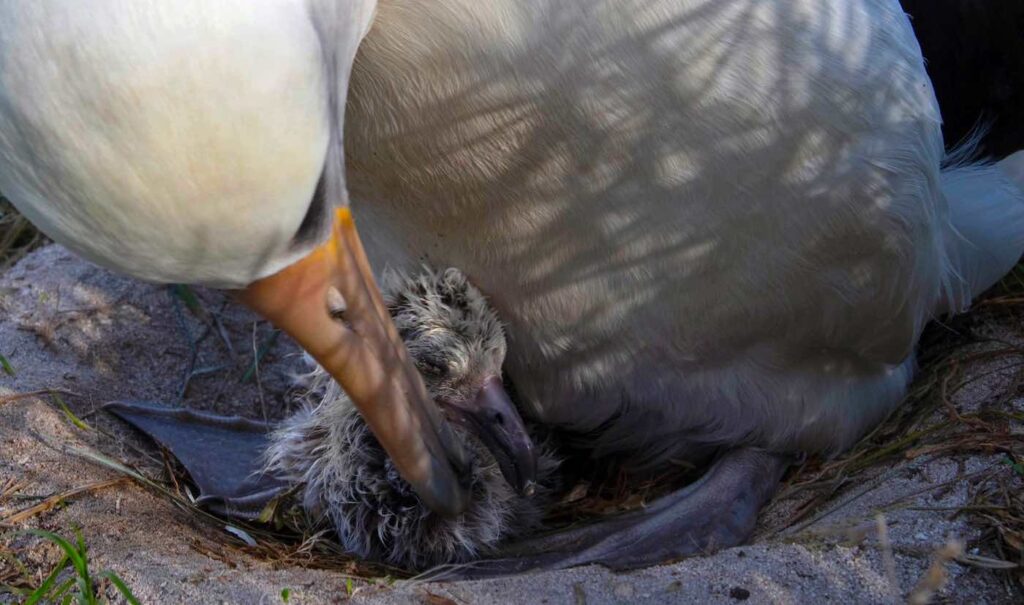
Albatross parents share incubation duties for 65 days and once the chick hatches, they share feeding duties. Chicks fledge, and fly for the first time, in the months of June and July.
Nearly 70% of the world’s Laysan albatross and almost 40% of black-footed albatross—as well as the endangered short-tailed albatross—all rely on Midway Atoll. 20 other bird species breed here, totaling over three million individual birds calling the Refuge home.
MORE: Birds in San Francisco Started Singing Differently in the Silence of the Pandemic Shutdown
The refuge, on the far northern end of the Hawaiian archipelago, is cooperatively managed by the U.S. Department of Commerce, Department of the Interior, and the State of Hawaii. To date over 275,000 albatrosses have been banded at the Refuge. Thus, biologists can make more informed management decisions that ensure seabirds have the habitat and resources they need in the future.
To support the conservation work of volunteers and staff working to restore the habitat and remove invasive species, you can donate on the website of Friends of Midway Atoll here:
WATCH some amazing video of Wisdom taking care of her chick…
FLY This Cuteness to Your Brood of Friends on Social Media…


